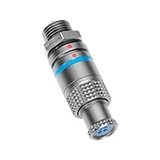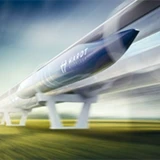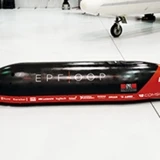Looking further out into space and time

The Thirty Meter Telescope, which should be operational by the end of the next decade, will help us see further into the history of the universe and look for signs of life beyond Earth.
Thirty metres: as its name suggests, is the diameter of the Thirty Meter Telescope (TMT). Until now, the largest ground-based telescopes were limited to ten metres. Together with two other similar programmes currently being developed, the TMT heralds the next generation of even more powerful telescopes.
The project was initiated by two legendary institutions in the history of astronomy, the California Institute of Technology in Pasadena and the University of California, joined by institutes and agencies from four nations: India, China, Japan and Canada, as well as the Gordon and Betty Moore Foundation (created by the co-founder of Intel).
The TMT is a reflecting telescope: stellar light is captured by its primary parabolic mirror. By reflection, it is focused on a secondary stationary mirror, then on a tertiary 3.5 × 2.5- metre mirror that can be directed into various state-of-the-art instruments, such as spectrometers, which carry out the measurements.
As far as reflecting telescopes are concerned, size matters.
At 30 metres, TMT’s collecting area is 9 times larger than that of the 10-metre model and its resolution more than 12 times greater than the Hubble Space Telescope.
TMT should make it possible for researchers to see even further than today, almost to the beginning of time, 14 billion years ago. With the help of the TMT, scientists hope to shed light on new facets of the history of our galaxies. They also look forward to learning more about exoplanets — planets located outside the solar system — and perhaps even find an answer to THE question: is there life beyond Earth?
For sure, the idea of a reflecting telescope is nothing new (its invention is often attributed to Sir Isaac Newton himself). However, such a 30-metre primary mirror has never been created before.
It would have been impossible to produce such a gigantic mirror in a single block, for both cost and logistics reasons. Based on the method already successfully tested at the W. M. Keck observatory in Hawaii, scientists thought they would fragment it into 492 hexagonal segments. This approach is both practical and economical, even though manufacturing such segments is rather delicate and takes all together no less than 5 years! In fact, each piece has to be initially polished, cut, mounted on a specific support and finally polished again by ion beams to ensure perfect reflection quality.
The construction of the primary mirror is well under way. However, it will take another decade before the TMT will be fully operational. The site of the observatory has not yet been confirmed: the initial choice of a mountain in Hawaii has been delayed by legal challenges to the process required for TMT to have permission to build. Hawaii remains the preferred option, but the observatory may end up being installed in La Palma on the Canary Islands (Spain). It will definitely be worth the wait, for the project is extremely promising!
A quest for maximum reliability
It doesn’t happen very often that a single installation is equipped with 10,332 LEMO connectors! This is indeed the case of TMT. The LEMO connectors are used for the TMT Primary Mirror Warping Harness system, whose primary function is to correct residual errors from the polishing and Ion Beam Figuring processes, as well as small installation errors. It will also compensate for the potential gravity induced errors (when the TMT’s namesake mirror is tilted, its weight can induce local deformations). To correct these deformations, the warping harness situated underneath the mirror will be actuated by a control system developed by JPL.
This control system allows scientists to compensate for known aberrations with nanometre precision. The warping harness will be remotely controlled and readjusted periodically (not continuously), allowing automated corrections of quasi-static and temperature-induced effects, up to 10 times per night. The number of connectors required and the 50-year lifetime requirement made reliability the key necessity. LEMO’s solutions satisfy TMT’s stringent requirements. The availability of the PC Board mounted options (EPG and EZG) were also important for the TMT project.


